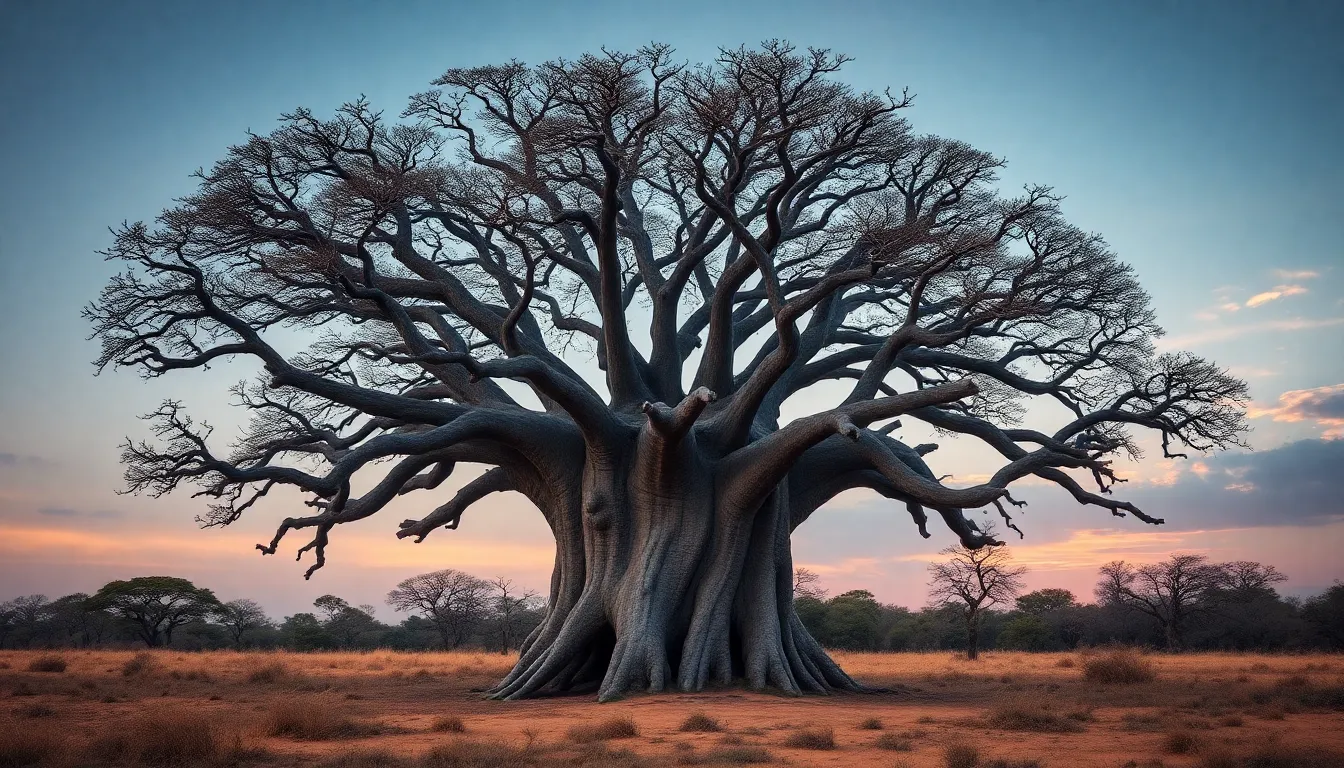The Sacred Baobab: Africa’s Tree of Wisdom and Longevity
Introduction: The Mystique of the Baobab Tree
The baobab tree, often referred to as the “Tree of Life,” holds a revered place in African culture and tradition. Its massive trunk and unusual silhouette make it one of the most recognizable trees on the continent. Throughout various African cultures, the baobab symbolizes wisdom, endurance, and longevity, standing as a testament to the resilience of life in harsh environments.
With its deep roots and expansive canopies, the baobab is not just a tree but a living monument, embodying the stories, traditions, and knowledge of the communities that surround it. As we delve deeper into the significance of this remarkable tree, we uncover the layers of meaning that it holds in the hearts of those who revere it.
Botanical Characteristics of the Baobab
The baobab tree, scientifically known as Adansonia, is distinguished by its unique physical features. It can grow up to 30 meters tall and live for over a thousand years. The most striking characteristic of the baobab is its enormous trunk, which can reach a diameter of up to 11 meters. This trunk acts as a water reservoir, allowing the tree to thrive in arid climates.
Compared to other tree species, the baobab’s lifespan is exceptional. While many trees live for several decades, baobabs can endure for centuries, making them witnesses to history. Their resilience to drought and fire sets them apart in the ecosystem, providing not only shelter but also sustenance for a variety of wildlife.
Cultural Significance Across African Societies
The baobab tree plays a pivotal role in the myths and folklore of numerous African societies. For many, it is seen as a symbol of creation and fertility. Stories abound, such as the tale of how the baobab was once a beautiful tree that was punished by the gods and turned upside down, explaining its peculiar shape.
Beyond mythology, the baobab serves as a community gathering place. Villagers often meet under its expansive branches to share news, conduct ceremonies, and hold important discussions. This social significance reinforces the baobab’s role as a central figure in community life, embodying the spirit of togetherness and wisdom.
The Baobab in Traditional Medicine
The medicinal properties of the baobab tree are well-documented in traditional African medicine. Various parts of the tree are used to treat an array of ailments:
- Bark: Used to treat fevers and infections.
- Leaves: Often brewed into teas for their nutritional and medicinal benefits.
- Fruit: Rich in vitamin C, it is consumed for its health benefits and used in various remedies.
Case studies have shown that communities utilize the baobab’s resources effectively, incorporating them into their daily lives and health practices. The tree’s contributions to health and wellness are an integral part of its cultural heritage.
The Baobab as a Symbol of Wisdom and Knowledge
The baobab tree is often associated with storytelling and oral traditions. Elders gather under its shade to impart wisdom and share stories, making the tree a living archive of cultural history. The stories told beneath its branches connect generations, preserving the knowledge and experiences of the past.
This association with storytelling highlights the importance of the baobab as not just a natural resource but as a cultural beacon that fosters learning, memory, and community cohesion.
Sustainable Uses of the Baobab
The economic benefits derived from the baobab are significant, particularly in rural communities. The fruit, leaves, and oil extracted from the baobab are utilized in various industries:
- Baobab Fruit: Highly nutritious, it is marketed as a superfood and consumed globally.
- Baobab Leaves: Used in cooking and as a source of vitamins.
- Baobab Oil: Sought after in cosmetic products for its moisturizing properties.
Sustainable harvesting practices are crucial to ensure that these resources do not diminish. Local communities are increasingly adopting methods that protect the baobab while allowing them to benefit economically, promoting both environmental stewardship and economic viability.
Environmental Importance of the Baobab
Baobab trees play a vital role in sustaining local ecosystems. They provide food and shelter for a variety of wildlife, including birds, bats, and insects. The tree’s fruit is a crucial food source for many animals, which in turn helps in seed dispersal, aiding in the reproduction of the species.
Moreover, the baobab contributes to biodiversity by supporting various plant and animal species that thrive in its shade and environment. Its presence is essential for maintaining ecological balance in the regions it inhabits.
Threats to the Baobab Population
Despite its resilience, the baobab tree faces numerous threats due to environmental changes and human activities. Climate change, deforestation, and land development adversely affect baobab populations. Additionally, overharvesting of its fruit and bark can lead to population decline.
Conservation efforts are underway to protect this iconic species. Initiatives include:
- Establishing protected areas to safeguard existing baobabs.
- Promoting awareness about the ecological and cultural significance of the tree.
- Implementing sustainable harvesting practices to ensure the preservation of baobabs for future generations.
Baobab in Modern Culture and Global Awareness
The influence of the baobab extends beyond its native lands. It has inspired artists, writers, and filmmakers worldwide, becoming a symbol of resilience and wisdom. In literature, the baobab often represents strength, nurturing, and community.
Global awareness initiatives aim to promote the baobab’s significance and encourage conservation efforts. Programs that educate people about its uses and importance are vital in ensuring that the legacy of the baobab continues to thrive.
Conclusion: The Legacy of the Baobab Tree
The baobab tree stands as a cultural and ecological icon, embodying the wisdom and longevity that it symbolizes. Its enduring significance in African culture and the natural world emphasizes the need for respect and preservation of this ancient tree. As we face modern challenges, the lessons from the baobab remind us of the importance of sustainability, community, and the interconnectedness of life.
It is imperative that we recognize the value of the baobab and take action to protect it, ensuring that future generations can continue to draw wisdom and inspiration from this magnificent tree.




